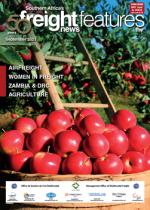With only around 15% of arable land under cultivation, the Zambian government is prioritising the expansion and modernisation of the sector.Support for agriculture features strongly in the Eighth National Development Plan (NDP) 2023 to 2026.At present agriculture contributes about 35% to the country’s non-traditional exports and about 10% to the total export earnings.More importantly, agriculture sustains around 24% of jobs in Zambia compared to 2% by the mining sector.The government estimates that agriculture sustains 70% of the population.According to the Ministry of Finance and National Planning, maize accounted for 72% of total farm output in 2021/2022.The other main crops were soya beans (8%), wheat (4%), sweet potatoes (4%) a n d groundnuts (3%).There has been some diversification into crops such as stevia, macadamias, blueberries and citrus. The NDP focuses on promoting export-driven economic growth.Exports of these crops increase opportunities for specialised logistics.Investment in technology is needed as smallholder subsistence farmers account for around 80% of agricultural production.The government is rolling out an electronic agro-input system, extension service support, access to finance, support for value-addition, storage and logistics, as well as the provision of inputs through the electronic agro-input system.Private-sector investment is being encouraged through a range of reforms and programmes.The NDP commits the government to “providing a stable trade policy, with emphasis on easing of restrictions on exports of agricultural commodities and facilitating access to finance”.Support will be provided for value addition, storage and logistics.“To increase hectarage under production and enhance productivity, agricultural mechanisation will be promoted.“The government will also promote farm block development, with special focus on diversification of crops and expansion of the livestock and fisheries sub-sectors.“The farm block concept entails the creation of specialised agricultural production and processing zones,” the IDP states.

